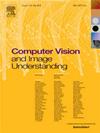Delving into CLIP latent space for Video Anomaly Recognition
IF 3.5
3区 计算机科学
Q2 COMPUTER SCIENCE, ARTIFICIAL INTELLIGENCE
引用次数: 0
Abstract
We tackle the complex problem of detecting and recognising anomalies in surveillance videos at the frame level, utilising only video-level supervision. We introduce the novel method , the first to combine Vision and Language Models (VLMs), such as CLIP, with multiple instance learning for joint video anomaly detection and classification. Our approach specifically involves manipulating the latent CLIP feature space to identify the normal event subspace, which in turn allows us to effectively learn text-driven directions for abnormal events. When anomalous frames are projected onto these directions, they exhibit a large feature magnitude if they belong to a particular class. We also leverage a computationally efficient Transformer architecture to model short- and long-term temporal dependencies between frames, ultimately producing the final anomaly score and class prediction probabilities. We compare against state-of-the-art methods considering three major anomaly detection benchmarks, i.e. ShanghaiTech, UCF-Crime, and XD-Violence, and empirically show that it outperforms baselines in recognising video anomalies. Project website and code are available at https://lucazanella.github.io/AnomalyCLIP/.
深入研究 CLIP 潜在空间,实现视频异常识别
我们仅利用视频级监督来解决在帧级检测和识别监控视频中异常情况的复杂问题。我们引入了新颖的 AnomalyCLIP 方法,这是首个将视觉和语言模型(VLM)(如 CLIP)与多实例学习相结合的方法,用于联合视频异常检测和分类。我们的方法特别涉及操纵潜在的 CLIP 特征空间来识别正常事件子空间,这反过来又使我们能够有效地学习异常事件的文本驱动方向。当异常帧被投射到这些方向上时,如果它们属于某个特定类别,就会表现出较大的特征幅度。我们还利用计算效率高的 Transformer 架构来模拟帧之间的短期和长期时间依赖关系,最终得出最终的异常得分和类别预测概率。我们将 AnomalyCLIP 与三种主要异常检测基准(即 ShanghaiTech、UCF-Crime 和 XD-Violence)中最先进的方法进行了比较,经验表明它在识别视频异常方面优于基准方法。项目网站和代码见 https://lucazanella.github.io/AnomalyCLIP/。
本文章由计算机程序翻译,如有差异,请以英文原文为准。
求助全文
约1分钟内获得全文
求助全文
来源期刊

Computer Vision and Image Understanding
工程技术-工程:电子与电气
CiteScore
7.80
自引率
4.40%
发文量
112
审稿时长
79 days
期刊介绍:
The central focus of this journal is the computer analysis of pictorial information. Computer Vision and Image Understanding publishes papers covering all aspects of image analysis from the low-level, iconic processes of early vision to the high-level, symbolic processes of recognition and interpretation. A wide range of topics in the image understanding area is covered, including papers offering insights that differ from predominant views.
Research Areas Include:
• Theory
• Early vision
• Data structures and representations
• Shape
• Range
• Motion
• Matching and recognition
• Architecture and languages
• Vision systems
 求助内容:
求助内容: 应助结果提醒方式:
应助结果提醒方式:


